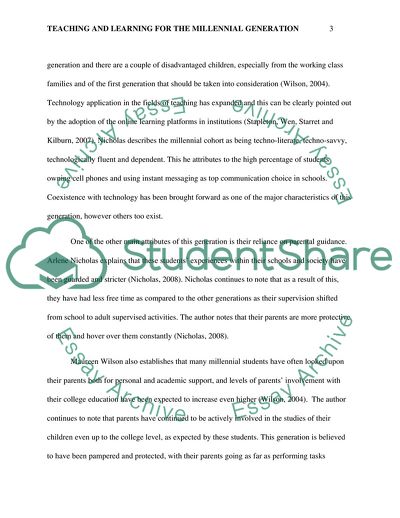Cite this document
(Teaching and Learning for the Millennial Generation Essay Example | Topics and Well Written Essays - 1500 words - 4, n.d.)
Teaching and Learning for the Millennial Generation Essay Example | Topics and Well Written Essays - 1500 words - 4. https://studentshare.org/social-science/1860715-synthesis-essay
Teaching and Learning for the Millennial Generation Essay Example | Topics and Well Written Essays - 1500 words - 4. https://studentshare.org/social-science/1860715-synthesis-essay
(Teaching and Learning for the Millennial Generation Essay Example | Topics and Well Written Essays - 1500 Words - 4)
Teaching and Learning for the Millennial Generation Essay Example | Topics and Well Written Essays - 1500 Words - 4. https://studentshare.org/social-science/1860715-synthesis-essay.
Teaching and Learning for the Millennial Generation Essay Example | Topics and Well Written Essays - 1500 Words - 4. https://studentshare.org/social-science/1860715-synthesis-essay.
“Teaching and Learning for the Millennial Generation Essay Example | Topics and Well Written Essays - 1500 Words - 4”. https://studentshare.org/social-science/1860715-synthesis-essay.


